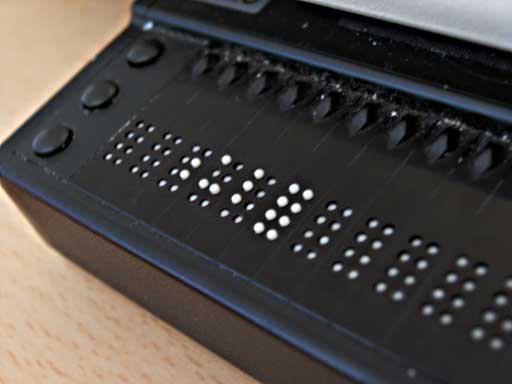Imagine computers that you can have conversations with or control through gestures and head movements. Or even your own thoughts.
There are endless energies and resources for whizbang toys such as games, crappy mobile apps, and new generations of smartphones… but the one area of genuine innovation, the one that is truly ground-breaking, is stuck in Nowheresville. In this glorious year 2016, we’re still ignoring computer users with vision, hearing, and other physical limitations.
None of us are getting any younger, and injury or illness can befall anyone. And yet, many people are excluded because they can’t see, or hear, or use a mouse and keyboard comfortably.
This is a silly state of affairs: it’s just an engineering problem. Ideally, anyone should be able to use any computer on equal terms, without needing someone standing by to help. And why not? Computers are just machines. We make them. We can make them better.
Linux and FOSS are the natural leaders for true universal computing, because FOSS always leads to the widest adoption. Let’s take a look at the current state of accessibility and then review some development resources.
Assistive Technologies
Talking computers are at the top of the list. We should be able to give commands, dictate content, and have computers read to us. Android’s “OK Google” voice recognition isn’t bad; it does a good job of getting words and punctuation right, and it supports useful commands for web searches, taking notes, and sending messages.
The missing pieces are universal support in all Android apps and offline support. You need to be connected to the network for OK Google to work, because it needs server computing power. This may change, however, as Google Research is investigating a speech recognition system that runs faster than real-time (not sure how that works, does it time travel?) locally, and does not require network resources.
Google Glass made a big splash and had a lot of potential for assistive technologies. But it was difficult to get an actual device to test, and then Google killed the whole project, which highlights the need for open hardware in addition to open software.
Mobile and wearable computing is the future, and the use of general-purpose PCs will continue to decline. But they are not going away anytime soon, and I certainly don’t see servers declining, but rather the opposite, so the current dismal state of voice operations still needs to be remedied.
A few specialized Linux distributions are available for people with vision and other impairments. They don’t provide complete solutions, but they’re trying, and they’re good alternatives to expensive proprietary products like the JAWS screen reader, which costs a mint and requires Microsoft Windows. (Imagine a world in which computer users are continually nagged to be responsible for their own computer security; then imagine a world in which the largest malware vector is required.)
TalkingArch is a bootable CD/USB version of Arch Linux for vision-impaired computer users. It is speech-enabled at startup, using the eSpeak software synthesizer and Speakup screenreader. It also supports Braille displays with brltty. Vision-impaired users will likely need help downloading and burning the image, and will need help installing it to a hard disk. Booting to removable media may also present problems because there is not yet an accessible BIOS; if you can’t see, how do you choose your boot device?

Vinux is based on Ubuntu 14.04, the Orca screen reader, and Unity, GNOME, and Mate. GNOME has the most comprehensive accessibility framework. Again, in addition to usability and compatibility hurdles, getting Vinux onto removable media or permanent installation is a major obstacle.
Sonar is a great distro with the latest in FOSS assistive technologies, including the OpenDyslexic Font for users with dyslexia, and the eViacam head and eye-tracking software for users who have trouble using a mouse and keyboard. eViacam requires a webcam.
Knoppix ADRIANE is a nice talking desktop system that bundles a good set of applications for web, multimedia, messaging, and document production. ADRIANE is for users who prefer a text interface to a graphical desktop. Again, the main hurdles are getting it downloaded and set up to use.
True Universal Computing
Assistive technologies should be baked in as fundamental subsystems, just like networking and graphics, rather than stapled on as afterthoughts, so that all applications can easily hook into them. The currently active Linux and FOSS accessibility projects all struggle for support. Even simple accessibility considerations such as readable text and universal color schemes don’t get much attention. Around 10 percent of all men have a form of color blindness, with red-green the most common. Isn’t that great? The two colors we use the most for status indicators!
This is the most meaningful Linux/FOSS frontier, and I encourage contributors to consider making accessibility their primary contribution to the world.


